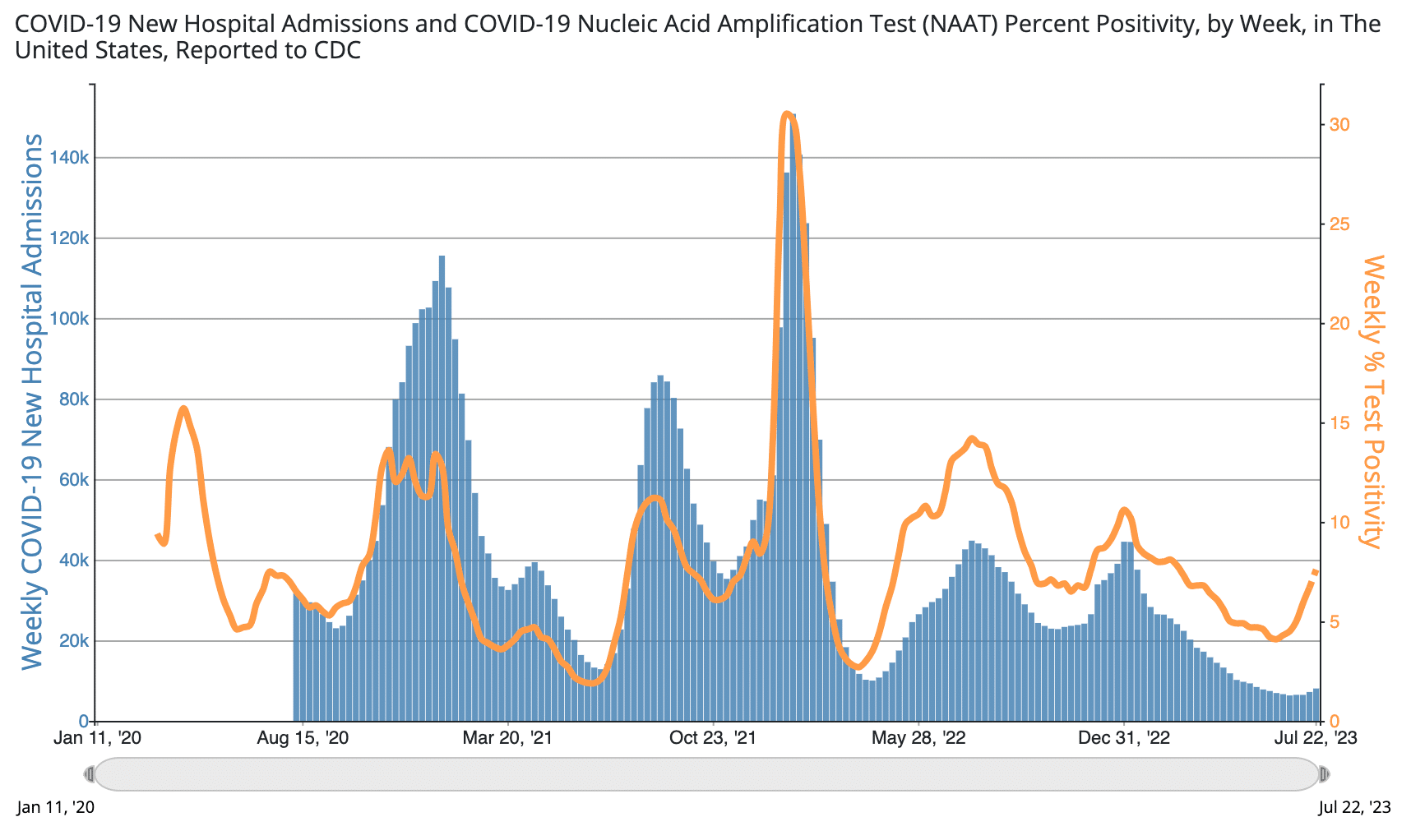Though new COVID-19 cases and hospitalizations remain at an all-time low, after seven months of steady decline, the trend reversed in early July and there has been an increase in new cases, followed by an increase in hospitalization for COVID-19. Data collection on COVID-19 cases is lower quality since the end of the public health emergency in May, but there has been an increase in positivity in lab testing and a 12 percent increase in people admitted to hospitals for COVID-19 in the last two weeks. Further, CVS Pharmacy reports an increase in sales of at-home test kits.
Deaths from COVID-19 continue to decrease. Early wastewater monitoring data suggest that the wave has plateaued and may already be subsiding. There has been a late summer wave in each of the last three years, so this might be part of the normal pattern of COVID-19 infection. The wave doesn’t seem to be caused by a new strain of COVID-19, but waning immunity may play a part in the rise. Experts expect that this wave will remain small, but that there will be an additional, larger wave in the winter.
There are things everyone can do to help control these waves and protect yourself and your loved ones from additional infection. Your immunity, whether acquired through infection or vaccination, continues to decline and new strains of COVID-19 are evolving all the time. In consultation with your doctor, make sure you are up-to-date on your vaccination. People who work closely with people at high risk for severe outcomes from COVID-19 infection should especially be up-to-date on their vaccinations. Only 17 percent of Americans have received the bivalent booster. If you haven’t gotten it yet, it is not too late. Additionally, in June the FDA’s Vaccines and Related Biological Products Advisory Committee recommended a new monovalent booster to target the XBB Omicron strain (more here) and it is expected to be approved by the FDA in September. When the new booster becomes available this Fall, in consultation with your doctor, consider getting that one as well.
You can read more on the wave at CNN, CBS News, US News and World Reports, NPR or Politico.

